Ken Finnigan [Ken Finnigan] - Enterprise Java Microservices
Here you can read online Ken Finnigan [Ken Finnigan] - Enterprise Java Microservices full text of the book (entire story) in english for free. Download pdf and epub, get meaning, cover and reviews about this ebook. year: 2018, publisher: Manning Publications, genre: Computer. Description of the work, (preface) as well as reviews are available. Best literature library LitArk.com created for fans of good reading and offers a wide selection of genres:
Romance novel
Science fiction
Adventure
Detective
Science
History
Home and family
Prose
Art
Politics
Computer
Non-fiction
Religion
Business
Children
Humor
Choose a favorite category and find really read worthwhile books. Enjoy immersion in the world of imagination, feel the emotions of the characters or learn something new for yourself, make an fascinating discovery.
- Book:Enterprise Java Microservices
- Author:
- Publisher:Manning Publications
- Genre:
- Year:2018
- Rating:4 / 5
- Favourites:Add to favourites
- Your mark:
Enterprise Java Microservices: summary, description and annotation
We offer to read an annotation, description, summary or preface (depends on what the author of the book "Enterprise Java Microservices" wrote himself). If you haven't found the necessary information about the book — write in the comments, we will try to find it.
Summary
Enterprise Java Microservices is an example-rich tutorialthat shows how to design and manage large-scale Java applicationsas a collection of microservices.
About the Technology
Large applications are easier to develop and maintain when youbuild them from small, simple components. Java developers now enjoya wide range of tools that support microservices applicationdevelopment, including right-sized app servers, open sourceframeworks, and well-defined patterns. Best of all, you can buildmicroservices applications using your existing Java skills.
About the Book
Enterprise Java Microservices teaches you to design andbuild JVM-based microservices applications. Youll start bylearning how microservices designs compare to traditional Java EEapplications. Always practical, author Ken Finnigan introducesbig-picture concepts along with the tools and techniques youllneed to implement them. Youll discover ecosystem components likeNetflix Hystrix for fault tolerance and master the Just enoughApplication Server (JeAS) approach. To ensure smooth operations,youll also examine monitoring, security, testing, and deploying tothe cloud.
Whats Inside
The microservices mental model
Cloud-native development
Strategies for fault tolerance and monitoring
Securing your finished applications
About the Reader
This book is for Java developers familiar with Java EE.
About the Author
Ken Finnigan leads the Thorntail project at Red Hat, which seeksto make developing microservices for the cloud with Java and JavaEE as easy as possible.
Ken Finnigan [Ken Finnigan]: author's other books
Who wrote Enterprise Java Microservices? Find out the surname, the name of the author of the book and a list of all author's works by series.

![Ken Finnigan [Ken Finnigan] Enterprise Java Microservices](/uploads/posts/book/119364/thumbs/ken-finnigan-ken-finnigan-enterprise-java.jpg)
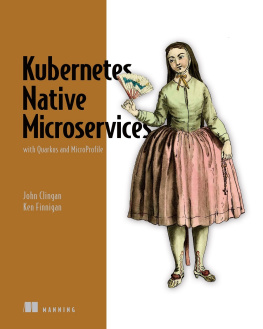
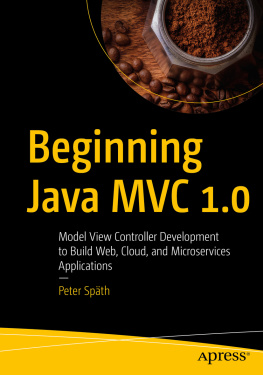

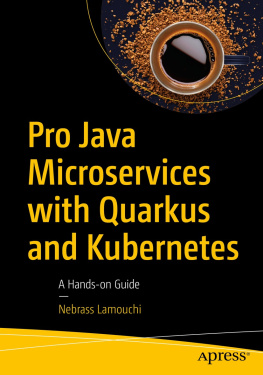
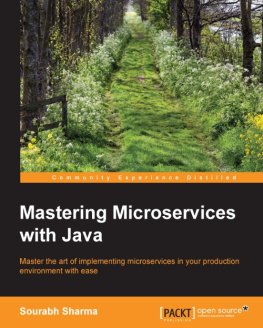
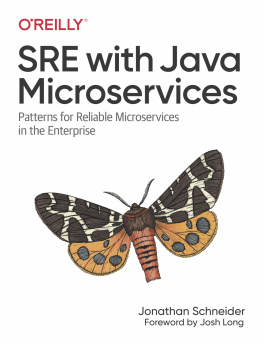

![Ram Kulkarni [Ram Kulkarni] - Java EE 8 Development with Eclipse](/uploads/posts/book/119355/thumbs/ram-kulkarni-ram-kulkarni-java-ee-8-development.jpg)
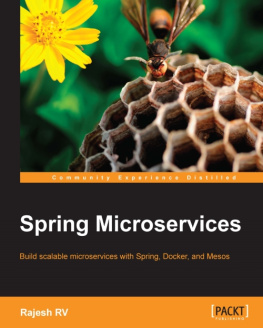

 Recognizing the importance of preserving what has been written, it is Mannings policy to have the books we publish printed on acid-free paper, and we exert our best efforts to that end. Recognizing also our responsibility to conserve the resources of our planet, Manning books are printed on paper that is at least 15 percent recycled and processed without the use of elemental chlorine.
Recognizing the importance of preserving what has been written, it is Mannings policy to have the books we publish printed on acid-free paper, and we exert our best efforts to that end. Recognizing also our responsibility to conserve the resources of our planet, Manning books are printed on paper that is at least 15 percent recycled and processed without the use of elemental chlorine.